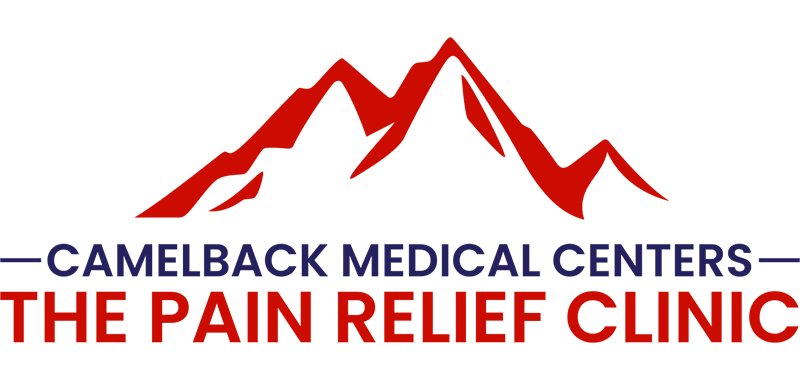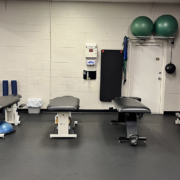Transform Your Health with Corrective Chiropractic Care: A Gateway to Better Posture and Pain Relief
Introduction
Corrective chiropractic care is a proactive approach to improving your spinal health, which can lead to better posture and significant pain relief. This type of healthcare focuses on identifying, treating, and preventing mechanical issues in the musculoskeletal system, especially the spine. Unlike traditional treatments that often only address the symptoms, corrective chiropractic care aims to fix the underlying causes of discomfort and misalignment in the body.
More and more people are becoming interested in chiropractic care as they look for holistic alternatives to conventional medical treatments. Many are opting for this non-invasive method because of its wide-ranging benefits that go beyond temporary solutions.

In this article, we will:
- Explore the various advantages of corrective chiropractic care
- Take a closer look at specialized techniques used in treatment
- Identify common conditions that can be managed through chiropractic care
- Provide practical tips for maintaining good posture and maximizing the effectiveness of treatment
It’s important to prioritize your spinal well-being. Consider making corrective chiropractic care a part of your overall health routine and experience improved mobility and a life free from pain.
Understanding Corrective Chiropractic Care
At Camel Back Medical Centers in Scottsdale, Naperville, Tempe, Phoenix , we have a team of experts who specialize in corrective chiropractic care. What sets us apart is our commitment to creating personalized treatment plans based on each individual’s specific health needs. Our chiropractors are highly skilled in neurologically based adjustments, a technique that not only provides immediate relief but also targets the underlying cause of pain and dysfunction.
Key Aspects of Camel Back Medical Centers Chiropractic:
- Personalized Treatment Plans: We believe that every patient is unique, which is why we create customized care regimens tailored to their specific health challenges and goals.
- Neurologically Based Adjustments: Our focus is on restoring proper nervous system function through targeted adjustments, as this is crucial for overall well-being.
- Expertise and Precision: Our chiropractors use precise techniques that are specifically designed to offer long-term solutions rather than temporary fixes.
By prioritizing the health of the nervous system as the foundation of bodily functions, we ensure that every adjustment goes beyond just relieving symptoms; it actively supports the body’s natural healing abilities and promotes optimal health. Our approach goes beyond traditional chiropractic methods by incorporating advanced spinal care techniques and embracing a holistic philosophy.
The Connection Between Spinal Health and Posture
Spinal health is crucial for how well your body works. When your spine is in good shape, it not only helps you maintain proper posture but also allows your nervous system to function at its best. Think of your spine as the main road that carries messages from your brain to every part of your body. If there are any blockages or misalignments along this road, known as subluxations, it can disrupt the flow of traffic—nerve signals—and lead to various health problems.
Misalignments can happen due to everyday activities like sitting for long periods, having poor sleeping habits, or experiencing physical injuries. These disruptions can cause:
- Posture problems: Your natural stance may become crooked, leading to muscle imbalances and extra strain on your joints.
- Pain in your back and neck: As your body tries to compensate for the misalignment, certain areas may become tense, often resulting in discomfort or pain.
- Limited movement: A misaligned spine can restrict how much you can move, making even simple actions feel hard or painful.
By keeping your spine properly aligned, you help ensure that your posture stays upright and balanced. This, in turn, supports effective bodily functions and lowers the chances of experiencing pain. Corrective chiropractic care focuses on bringing back this balance, with the goal of improving posture and enhancing overall quality of life.
In the next section, we’ll explore how corrective chiropractic care specifically helps with posture improvement and eases chronic conditions caused by spinal misalignments.

Benefits of Corrective Chiropractic Care for Posture Improvement
Personalized treatment plans in corrective chiropractic care are not a one-size-fits-all solution. Each plan is meticulously crafted to meet the unique needs of an individual, based on a comprehensive evaluation of their posture, spinal alignment, and overall health. This personalization ensures that every adjustment, exercise, and health recommendation directly targets the specific issues that a patient faces.
1. Targeted Results
By focusing on the individual’s conditions and goals, personalized treatment plans can more effectively improve posture, alleviate pain, and enhance mobility.
2. Consistent Monitoring
Adjustments to the treatment plan are made regularly to reflect progress and further refine the approach for optimal outcomes.
Neurologically based adjustments form a cornerstone of these personalized plans. The science behind this approach is fascinating; it’s centered around the premise that the body’s nervous system controls all functions and healing processes.
3. Restoration of Function
Neurologically based adjustments aim to correct misalignments in the spine that may be disrupting nerve communication. This restoration facilitates the body’s ability to heal itself and maintain homeostasis.
4. Enhanced Communication
By improving nerve signal flow, these adjustments help ensure that messages from the brain reach all parts of the body without interference, which is critical for proper posture and function.
By addressing both structure and neurological function, corrective chiropractic care offers a comprehensive solution for posture improvement that extends beyond mere symptom relief. The results? You experience tangible improvements in how you sit, stand, and move through life.
Improving Posture Through Being Mindful of Ergonomics
Maintaining good posture is crucial for our overall well-being, whether we’re working at our desks or relaxing at home. One way to achieve this is by practicing conscious ergonomics, which involves making intentional adjustments to our environment to support our bodies better. Here are some key elements of conscious ergonomics that can help promote a healthier posture:
1. Set Up Your Workspace Properly
- Adjust your chair height so that your feet are flat on the floor and your knees are at a 90-degree angle.
- Make sure your computer screen is at eye level to avoid straining your neck.
2. Try Using Standing Desks
Incorporating standing desks or adjustable workstations into your daily routine can be beneficial for your spine. By alternating between sitting and standing positions, you can reduce pressure on your back and improve overall posture.
3. Pay Attention to Keyboard and Mouse Placement
- Position your keyboard and mouse within easy reach, so you don’t have to strain your arms or shoulders.
- Keep your wrists straight and relaxed while using them to minimize stress on these joints.
4. Create an Ergonomic Home Environment
Even when you’re not working, it’s essential to prioritize ergonomics in your everyday activities. Here are a few tips for maintaining good posture at home:
- Choose supportive seating options like ergonomic chairs that provide adequate back support.
- Consider adding lumbar support cushions to your existing furniture to maintain the natural curve of your lower back.
By incorporating these principles of ergonomics into your daily life, you can not only improve your posture but also enhance the effectiveness of any chiropractic treatment you may be receiving. Small changes in how we interact with our surroundings can make a big difference in our spinal health. With conscious ergonomics, you’re taking proactive steps towards developing better postural habits and preventing pain.
2. The Power of Exercise in Supporting Good Postural Alignment
Engaging in specific posture exercises and stretching routines is crucial for strengthening the muscles that maintain good postural alignment. These activities not only improve muscle strength and flexibility but also help keep your spine in the right position, which is essential for overall health.
Key Posture Exercises:
- Planks: This exercise focuses on your core, which plays a vital role in stabilizing your entire body. A strong core helps you maintain an upright posture and lowers the chances of experiencing back pain.
- Bridges: By activating your glutes and lower back, bridges support the muscles needed for proper alignment.
- Wall Angels: Stand with your back against a wall and move your arms up and down as if making snow angels. This motion targets the upper back and shoulder muscles that assist in keeping your spine aligned.
Effective Stretching Routines:
- Cat-Cow Stretch: This yoga pose increases the flexibility of your spine and can alleviate tension in your neck and upper back.
- Child’s Pose: A relaxing stretch that elongates the muscles in your back and relieves stress from your shoulders to the lower back.
- Chest Opener Stretch: Perfect for those who spend extended periods sitting at a desk, this stretch opens up the chest and shoulders, counteracting the tendency to slouch forward.
Make these exercises a part of your daily routine to promote proper posture. Your chiropractor may also give you personalized exercise recommendations tailored to address any specific postural issues you’re dealing with. Remember, consistency is key; regular practice will lead to noticeable improvements in alignment and a reduction in pain.

Taking a Holistic Approach to Spinal Health with Corrective Chiropractic Care
Corrective chiropractic care takes a holistic approach that goes beyond temporary pain relief. This treatment method believes that overall wellness involves more than just physical adjustments – it also looks at lifestyle habits that affect spinal health.
How Corrective Chiropractic Care Works
The goal of corrective chiropractic care is to not only alleviate pain but also correct the underlying issues causing the pain. Here’s how it works:
- Initial Assessment: The first step is a thorough evaluation of your posture, spinal alignment, and movement patterns. This helps identify any imbalances or dysfunctions.
- Customized Treatment Plan: Based on the assessment findings, a personalized treatment plan is created to address your specific needs. This may involve a combination of chiropractic adjustments, therapeutic exercises, and lifestyle recommendations.
- Structural Corrections: Chiropractic adjustments are used to realign the spine and restore proper joint function. These corrections help reduce pain, improve mobility, and support overall spinal health.
- Lifestyle Modifications: Alongside the adjustments, you’ll be guided on making positive changes to your daily habits. This can include ergonomic modifications, posture awareness techniques, stress management strategies, and nutritional guidance.
- Progress Monitoring: Regular progress evaluations are conducted to track your improvement and make any necessary adjustments to the treatment plan.
Key Principles of Corrective Chiropractic Care
Here are the key principles that guide corrective chiropractic care:
- Embracing Lifestyle Changes: It’s crucial to evaluate daily activities, dietary choices, stress levels, and exercise routines. The goal is to promote habits that support the structural corrections made during chiropractic sessions.
- Addressing the Whole Person: Rather than just treating symptoms, corrective chiropractic care aims to identify and resolve the underlying causes of pain conditions. This approach ensures long-term health benefits and can prevent future ailments.
- Integrating Preventative Strategies: Patients are encouraged to adopt preventative measures to safeguard against the recurrence of pain and posture issues. This might include posture-awareness practices and ergonomic adjustments in their living and working environments.
By focusing on these holistic principles, corrective chiropractic care fosters a proactive attitude towards health. Patients become empowered to take charge of their well-being, leading to more sustainable outcomes than those provided by symptomatic relief techniques alone. Through personalized treatment plans that address both immediate discomfort and potential sources of future issues, individuals experience a comprehensive form of care tailored specifically to their needs.
Common Conditions That Can Be Managed Through Corrective Chiropractic Techniques
Corrective chiropractic care has proven effective for a variety of conditions that stem from spinal misalignments and related musculoskeletal issues. By focusing on the root causes, these techniques promote healing and offer long-term relief.
1. Neck Pain
Often arising from poor posture, accidents, or overuse, neck pain can be debilitating. Corrective chiropractors use adjustments to realign the cervical vertebrae, reducing pressure on nerves and muscles that may contribute to discomfort.
2. Muscle Imbalances
When muscles are unevenly stressed, it can lead to an imbalance that affects the spine’s stability. Targeted chiropractic treatments help restore balance by addressing the tension in overactive muscles while strengthening the underactive ones.
3. Herniated Discs
A herniated disc occurs when the soft center of a spinal disc pushes through a crack in the tougher exterior casing. Chiropractic care methods such as spinal decompression therapy gently stretch the spine, allowing the disc to reposition itself and alleviate nerve compression.
4. Degenerative Conditions
Conditions like osteoarthritis or degenerative disc disease involve the wear-and-tear of spinal elements. Chiropractic adjustments and therapeutic exercises prescribed by corrective practitioners can slow down degeneration, improve joint mobility, and reduce pain.
Through personalized treatment plans, corrective chiropractic professionals aim to not only treat these common conditions but also educate patients on how to maintain their spinal health. This proactive approach ensures patients are equipped with knowledge on how to prevent future injuries and promote overall well-being.
The Role of Qualified Professionals in Ensuring Safe and Effective Corrective Chiropractic Care
The Torque Release Technique (TRT) is a modern and precise approach to chiropractic care. It offers a gentle method of adjusting the spine, providing accurate results. Unlike traditional manual adjustments, TRT uses a specialized tool called the Integrator to apply controlled force to specific areas of the spine.
Benefits of Torque Release Technique (TRT)
Here are some key benefits of the Torque Release Technique (TRT):
- Gentle and Precise: TRT utilizes a unique instrument known as the Integrator, which targets specific areas of the spine with controlled force. This method contrasts with traditional manual adjustments, providing a less forceful experience without compromising effectiveness.
- Suitable for All Ages: Given its gentle nature, TRT is appropriate for everyone from young children to older adults, making it a versatile option for families seeking care for all members.
When it comes to corrective chiropractic care, it’s crucial to have the right professional guiding you through the process. Qualified chiropractors play a vital role in ensuring that treatments like TRT are performed safely and effectively.
Why Choose a Qualified Professional?
Here are two important reasons why choosing a qualified professional is essential:
- Experience Matters: A chiropractor with extensive training in TRT and other corrective techniques will have a deeper understanding of spinal biomechanics and neurological functions, which translates into better care.
- Credentials Count: Look for professionals who can demonstrate their qualifications through certifications, ongoing education, and a track record of successful patient outcomes.
By selecting a proficient corrective chiropractor, you’re taking an important step towards improving your spinal health. With their expertise, you can find relief from pain and enhance your overall functionality.
Remember, your spine is one of the most delicate structures in your body. It’s crucial to trust it only in the hands of skilled professionals who are well-informed about the latest developments in chiropractic care.
Extending the Benefits: Corrective Chiropractic Care for Peripheral Joints
Corrective chiropractic care is not limited to the spine; it also offers significant benefits for peripheral joints. Joints such as the shoulders, wrists, and knees are integral to daily movement and function. When these joints are misaligned or function improperly, it can lead to pain and reduced mobility.
Chiropractic Adjustments for Shoulder Health
- Rotator Cuff Injuries: By restoring proper alignment and movement in the shoulder joint, chiropractic adjustments can aid in healing and pain relief.
- Frozen Shoulder Syndrome: Adjustments help increase the range of motion and decrease discomfort associated with this condition.
Wrist Adjustments for Repetitive Strain
- Carpal Tunnel Syndrome: Chiropractic care can alleviate pressure on the median nerve caused by repetitive motions.
- General Wrist Pain: Adjustments can correct misalignments that contribute to pain and functional limitations.
Knee Joint Relief Through Chiropractic
- Knee Osteoarthritis: Regular adjustments may improve joint function and reduce pain by ensuring correct alignment.
- Patellofemoral Pain Syndrome: Chiropractors can address underlying imbalances that contribute to knee pain, particularly in athletes.
By incorporating these targeted adjustments into a comprehensive treatment plan, chiropractors help patients achieve better joint health. This integrative approach ensures that you not only experience relief from spinal issues but also enjoy improved function and comfort in your daily activities.
Case Studies: Real-Life Transformations Through Corrective Chiropractic Care
Corrective chiropractic care has transformed the lives of many people. Their stories are powerful evidence of how effective this treatment can be.
Patient A: Overcoming Chronic Lower Back Pain and Posture Issues
After years of sitting at a desk, Patient A developed chronic lower back pain and started slouching. But with a personalized corrective chiropractic plan, they experienced amazing results:
- Significant reduction in pain
- Noticeable improvement in posture
All of this happened within just a few months.
Patient B: Returning to Running Without Knee Pain
Patient B loved running, but recurring knee pain was holding her back. With targeted chiropractic adjustments focusing on the spine and other joints, she was able to:
- Regain full mobility
- Start running again without any discomfort
Patient C: Finding Relief from Neck Pain and Headaches
Dealing with constant neck pain and tension headaches can be incredibly frustrating. But for Patient C, several sessions of neurologically based chiropractic care made a world of difference:
- Headaches went away
- Spinal alignment improved, leading to better posture
- Overall well-being got better
Each of these cases shows how corrective chiropractic care is tailored to individual needs and can help with different health issues related to the spine and joints.
The impact of corrective chiropractic care goes beyond just relieving symptoms—it creates long-term improvements for better health.
Incorporating Corrective Chiropractic Care Into Your Wellness Routine
Making corrective chiropractic care a part of your regular wellness routine requires a commitment to ongoing healthy habits. Here’s how you can do it:
Schedule Regular Maintenance Sessions
Regular chiropractic check-ups are important for managing and preventing symptoms in the long run. Once you start feeling better, these sessions help maintain your progress and prevent any issues from coming back.
Practical Tips for Consistency
Here are some practical tips to help you stay consistent with your corrective chiropractic care:
- Set Reminders: Mark your calendar for routine chiropractic check-ups, just like you would for dental appointments.
- Integrate with Fitness: Align your chiropractic visits with your fitness schedule to enhance muscle and joint recovery.
- Insurance and Budgeting: Review your insurance coverage and budget to make sure you can sustain your wellness plan.
Additional Benefits of Corrective Chiropractic Care
Corrective chiropractic care does more than just provide immediate pain relief. It can also complement treatments for certain conditions:
- TMJ Dysfunction: Chiropractic care can help reduce tension in the muscles around the jaw, potentially easing TMJ symptoms.
- Generalized Anxiety Disorder: Adjustments may lower physiological stress responses, which can be beneficial for managing anxiety.
- Scoliosis: While it’s not a cure, chiropractic interventions can support other treatments in managing discomfort and improving posture for individuals with scoliosis.
By incorporating corrective chiropractic care into your regular health practices, you take an active role in nurturing your body’s balance and function.
Final Thoughts
The journey to optimal health is incomplete without addressing the spine’s role in your body’s overall function. Good spinal health is a cornerstone for not just physical well-being but also for the effective management of conditions like osteoarthritis and headaches/migraines. Early intervention with corrective chiropractic care can be a game-changer, offering relief and setting a foundation for long-term wellness.
Remember, each spine is unique, and so are the corrective care needs. Seeking advice from a qualified chiropractor can help you determine if this approach aligns with your health goals. They can provide:
- An individualized assessment of your spinal health
- A tailored plan that targets your specific concerns
- Non-invasive options to traditional medical interventions
By maintaining good posture, engaging in proactive exercises, and receiving regular chiropractic adjustments, you empower yourself against common ailments. It’s about taking charge of your health today for a pain-free tomorrow.
Take Action: Consult with a chiropractor like those at Camel Back Medical Centers in Scottsdale, Naperville, Tempe, Phoenix to explore how neurologically based adjustments could benefit you specifically.












